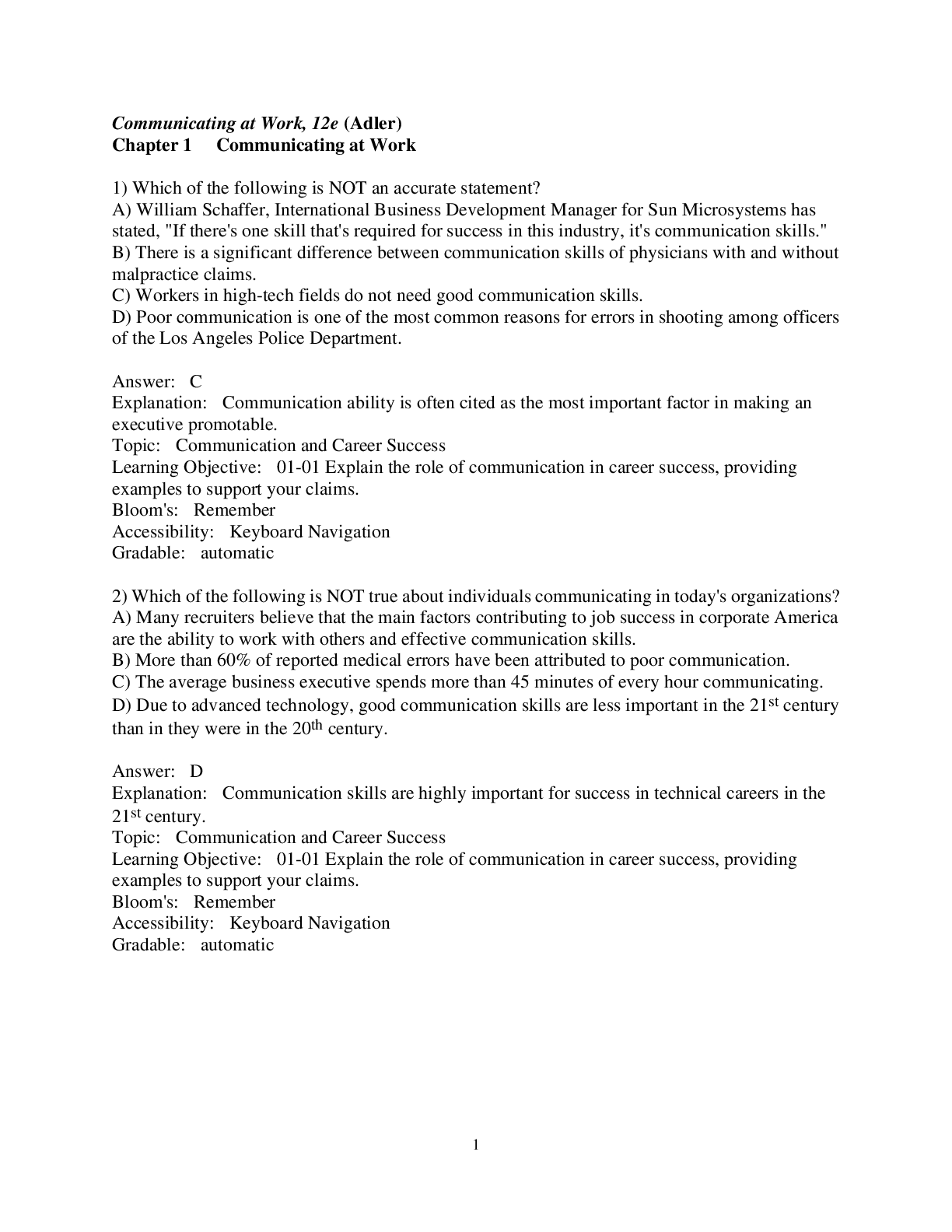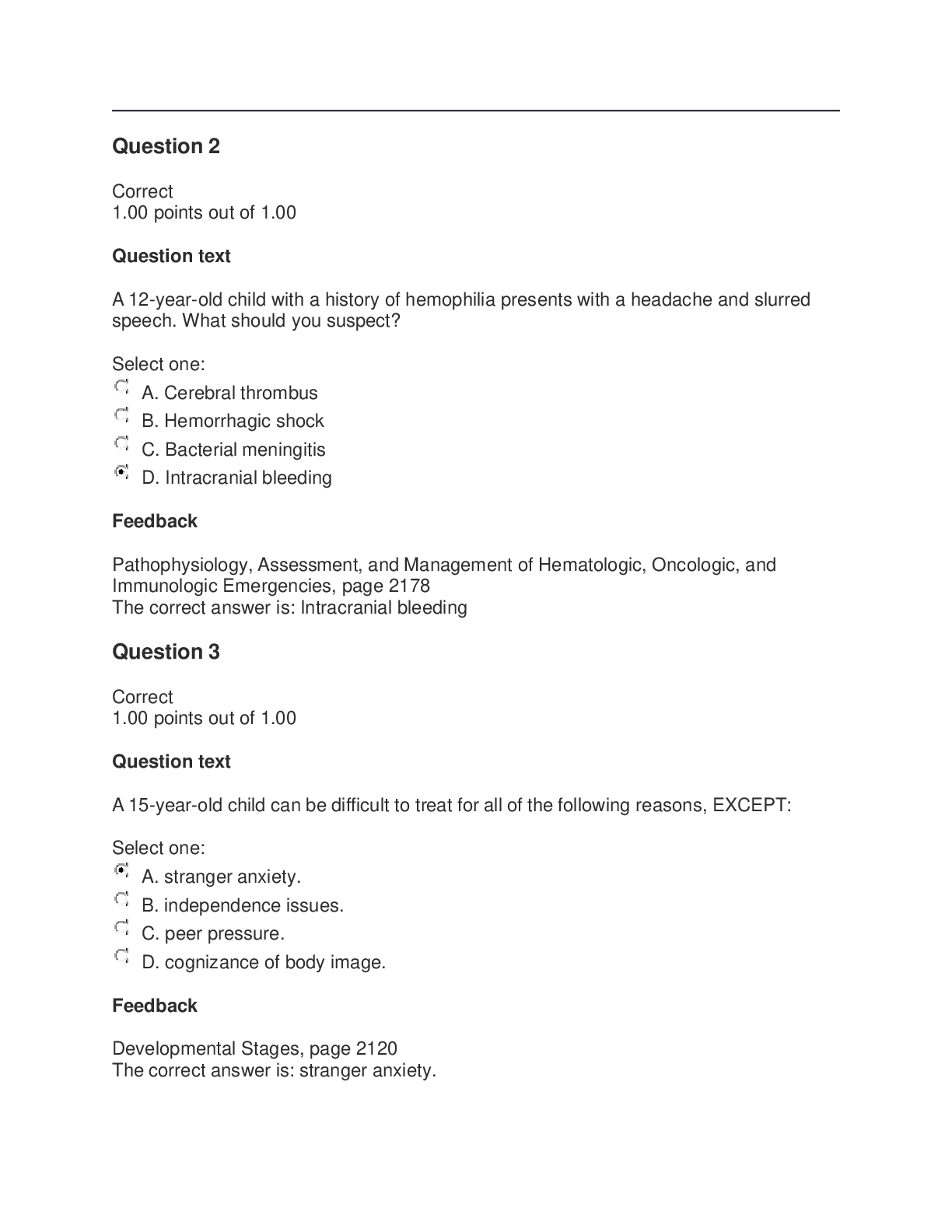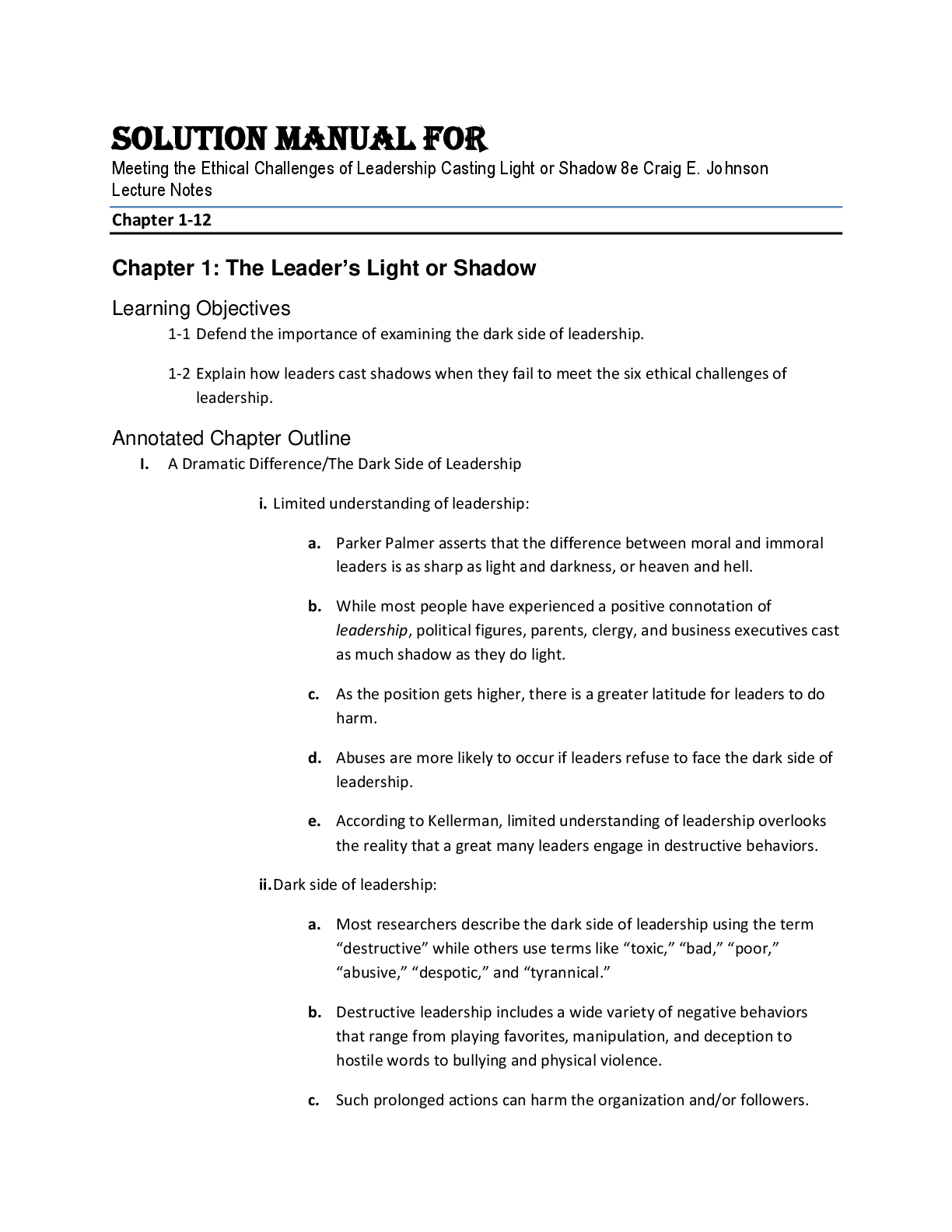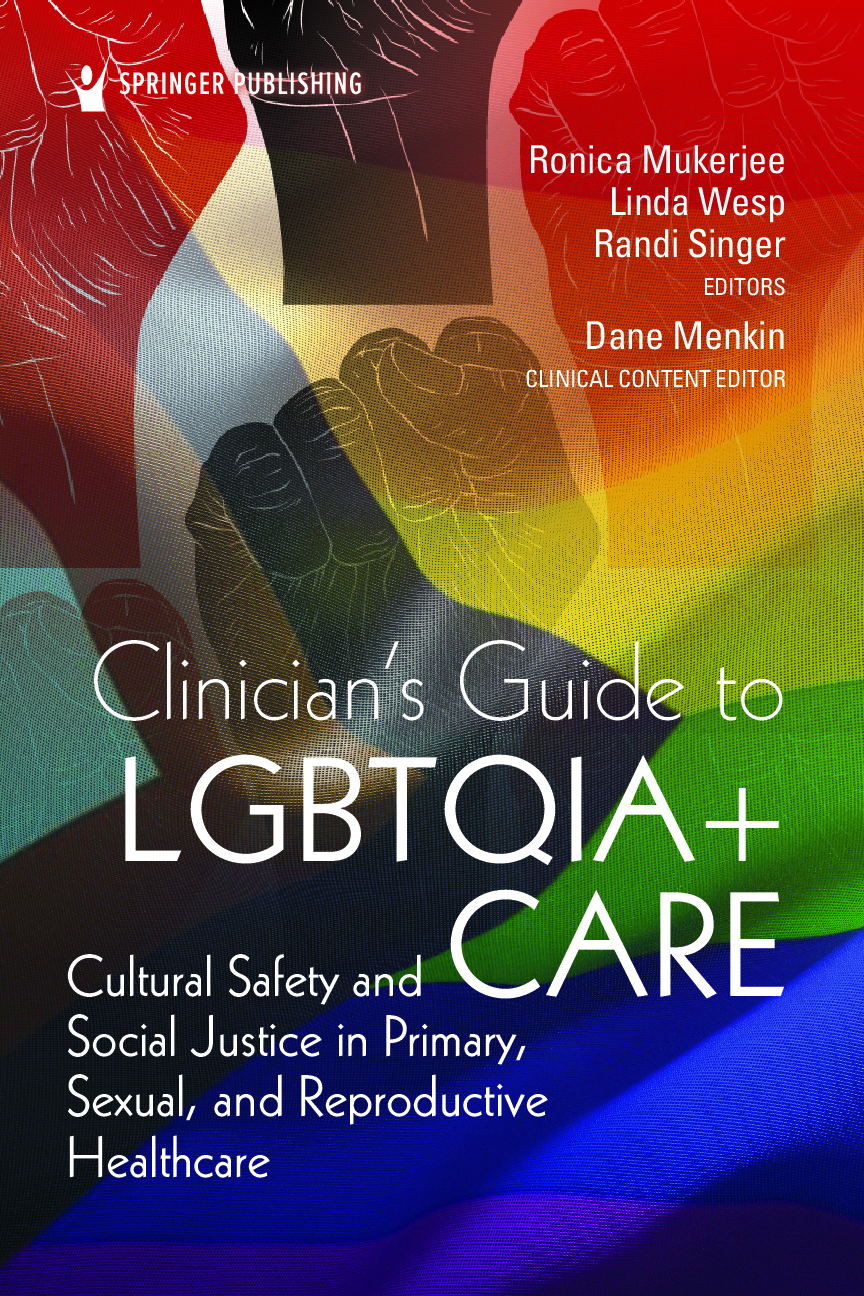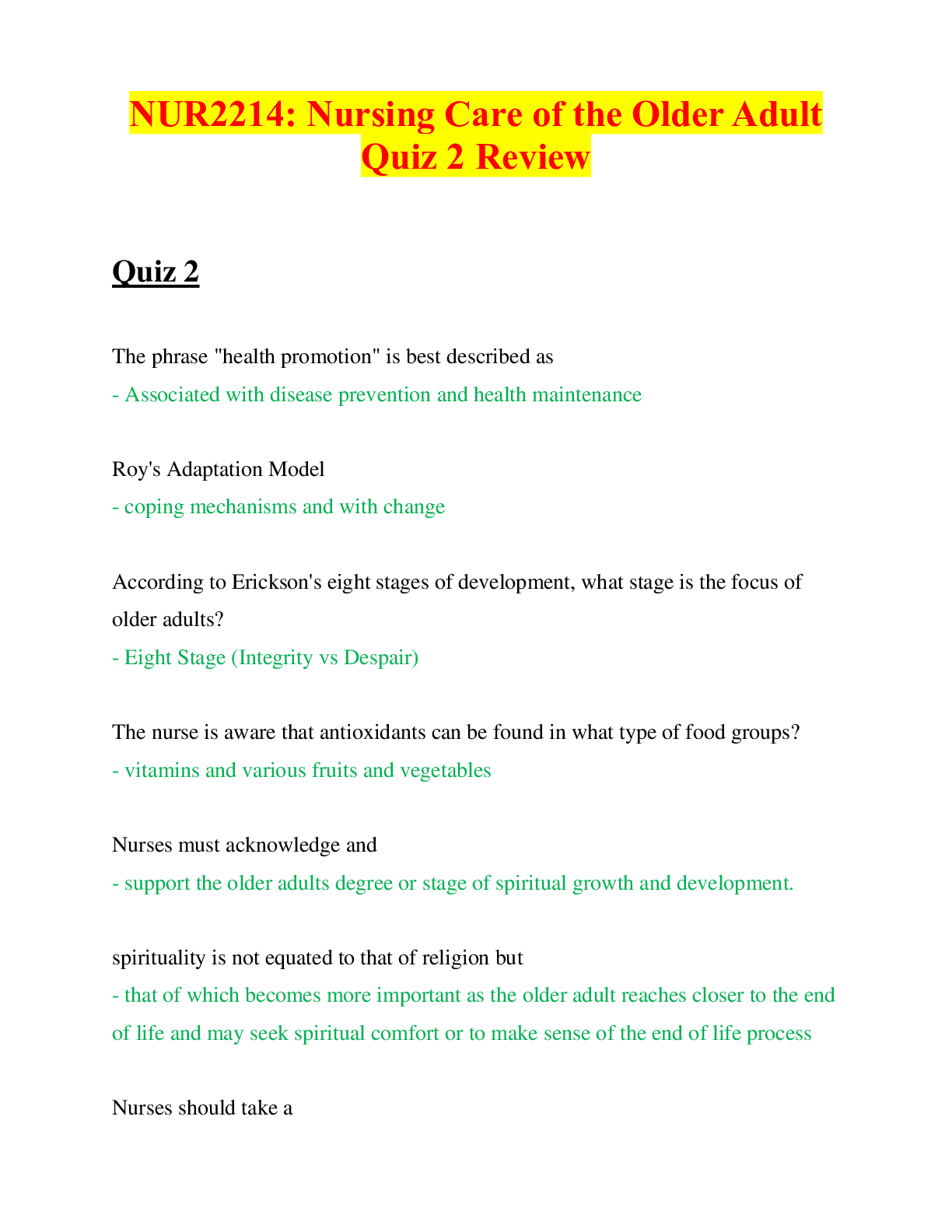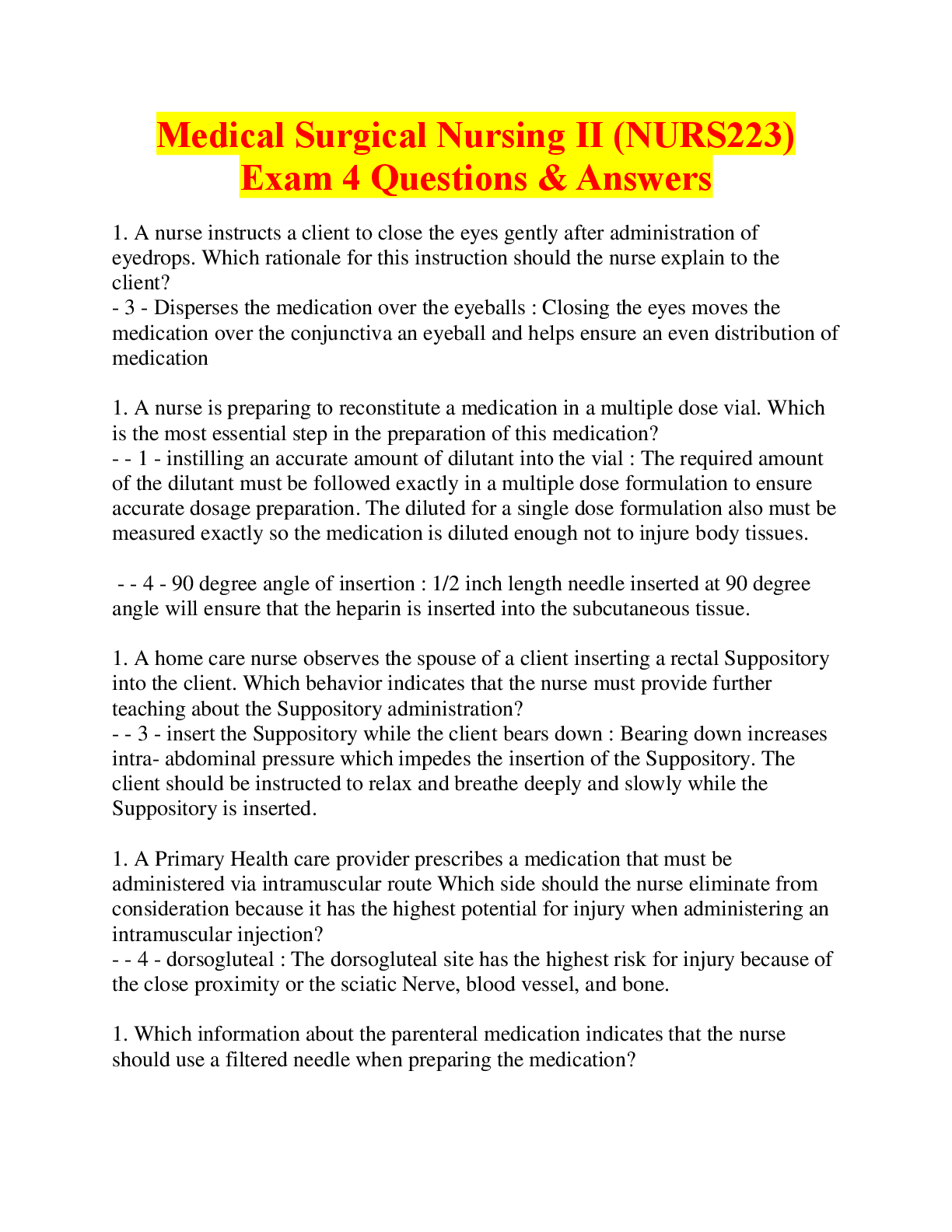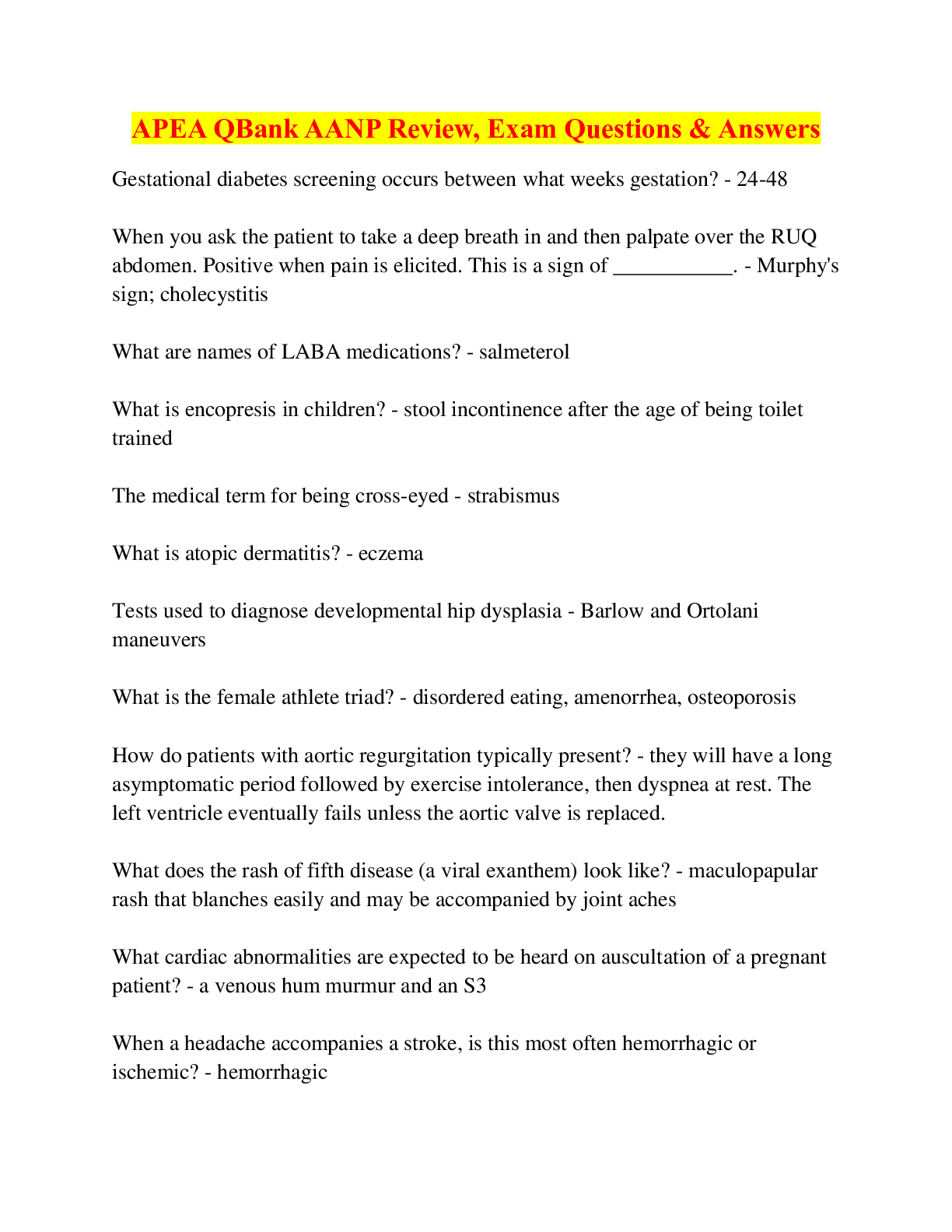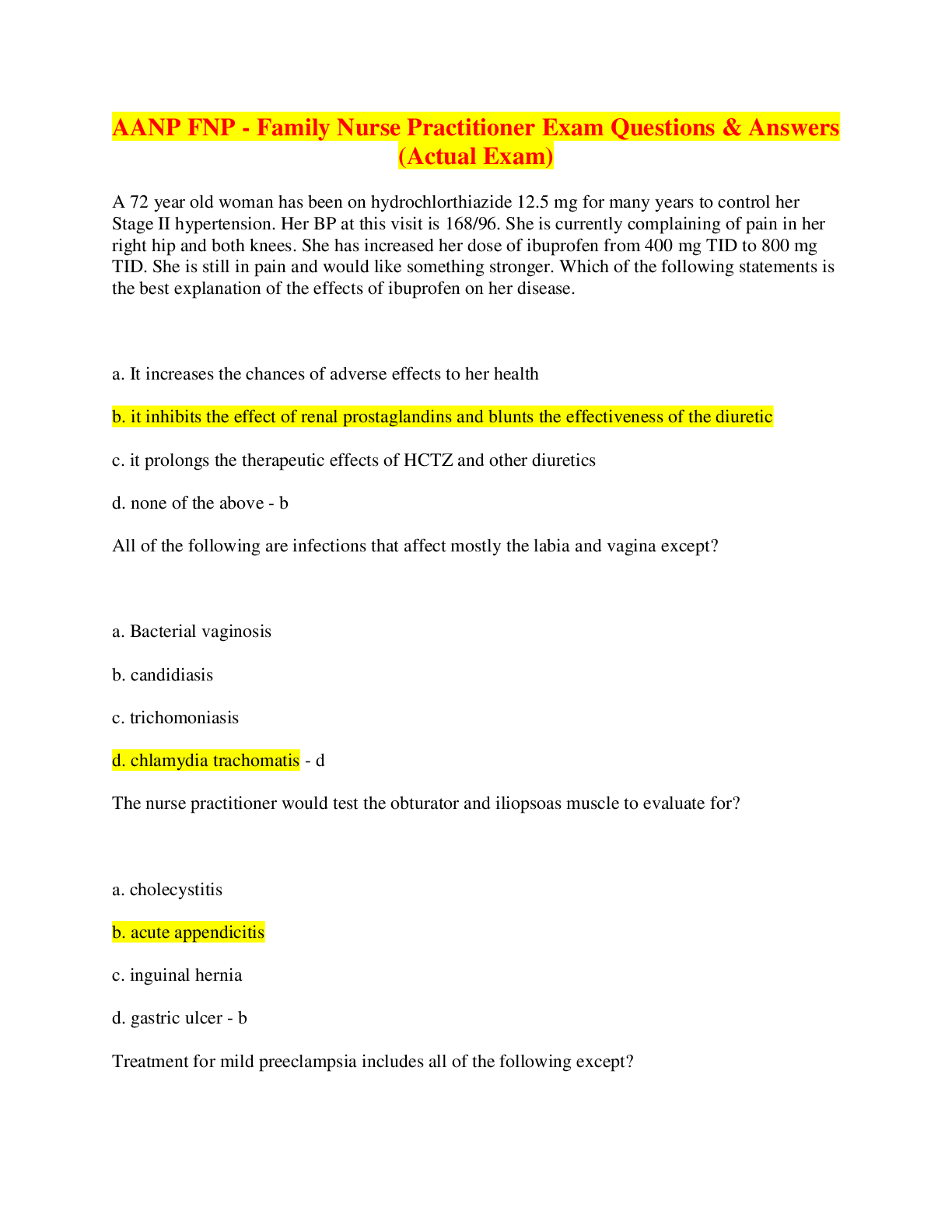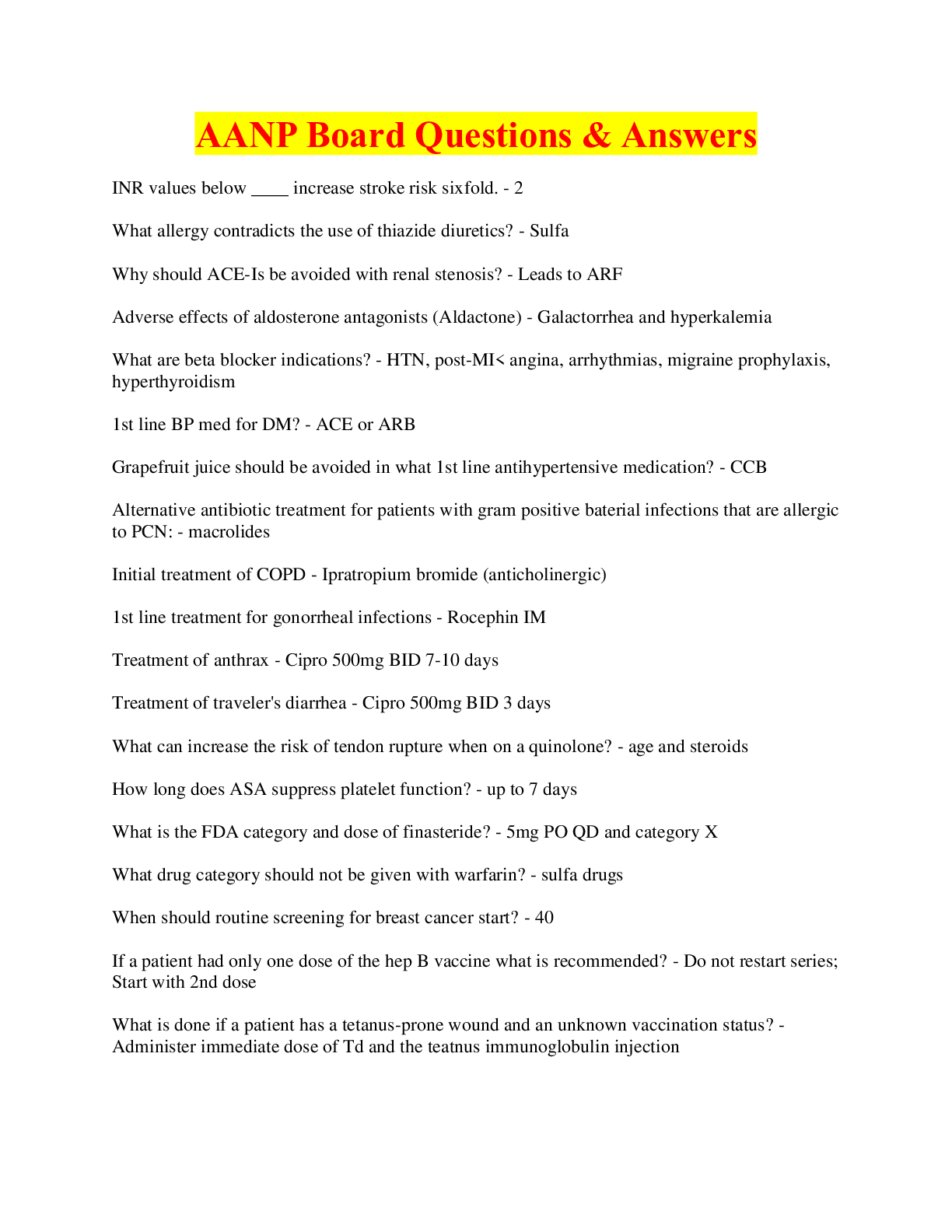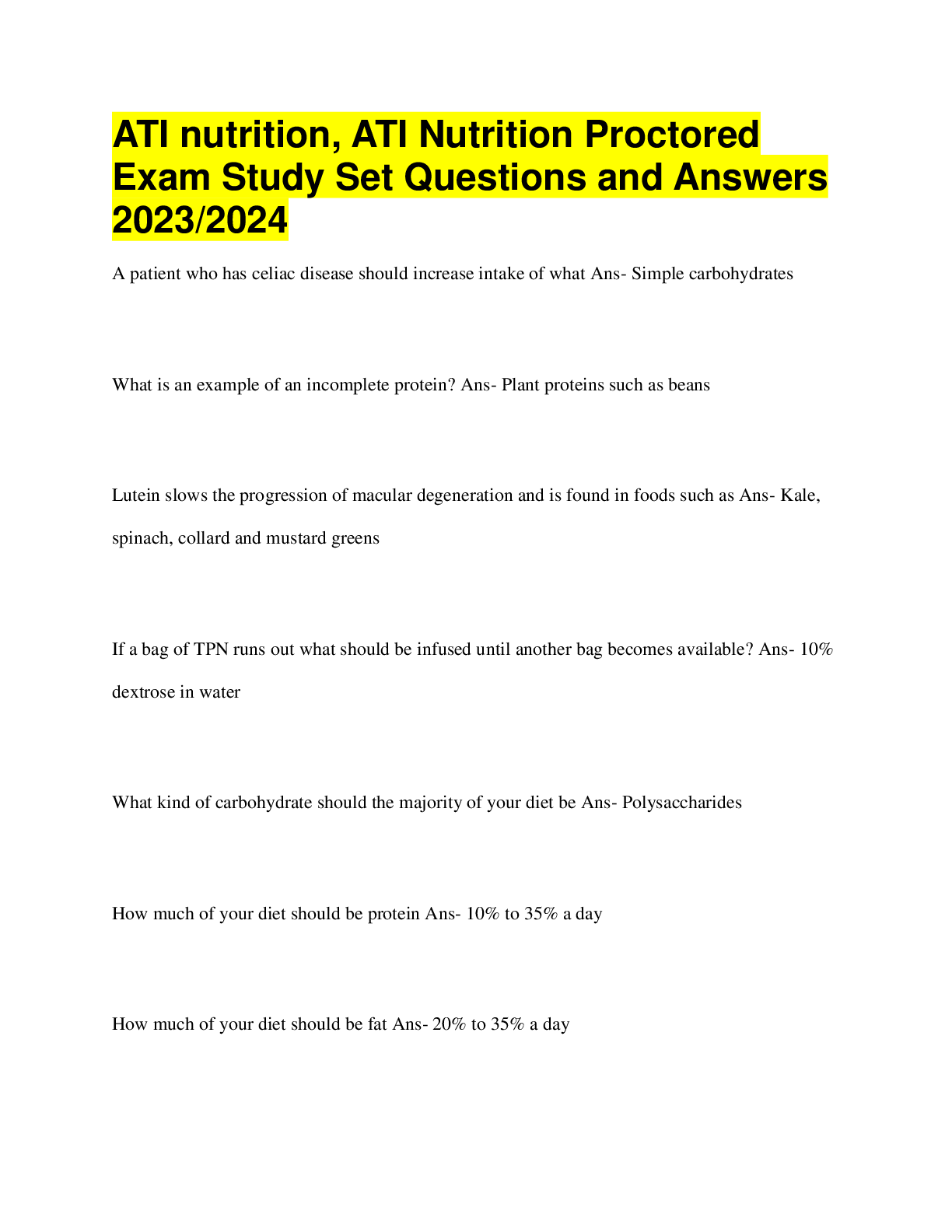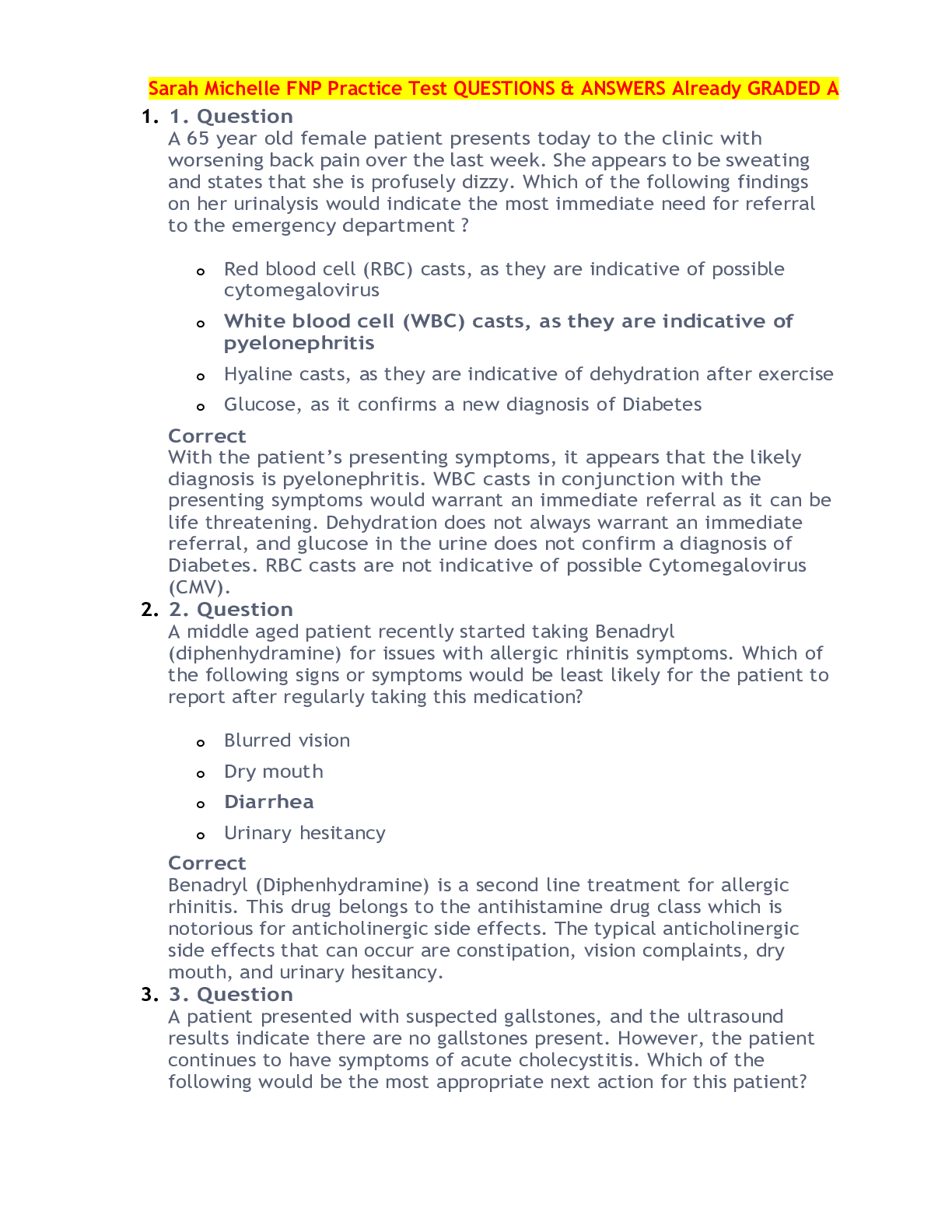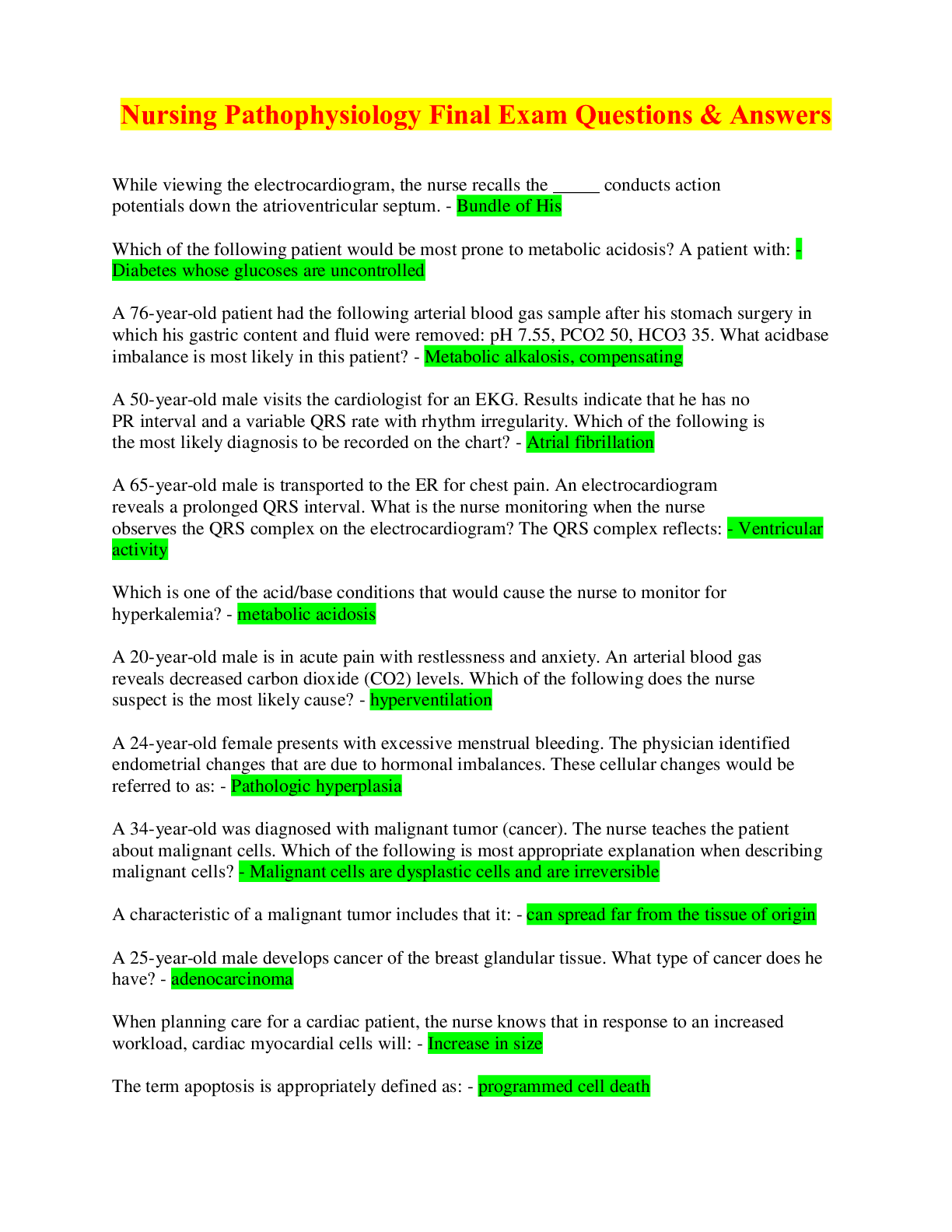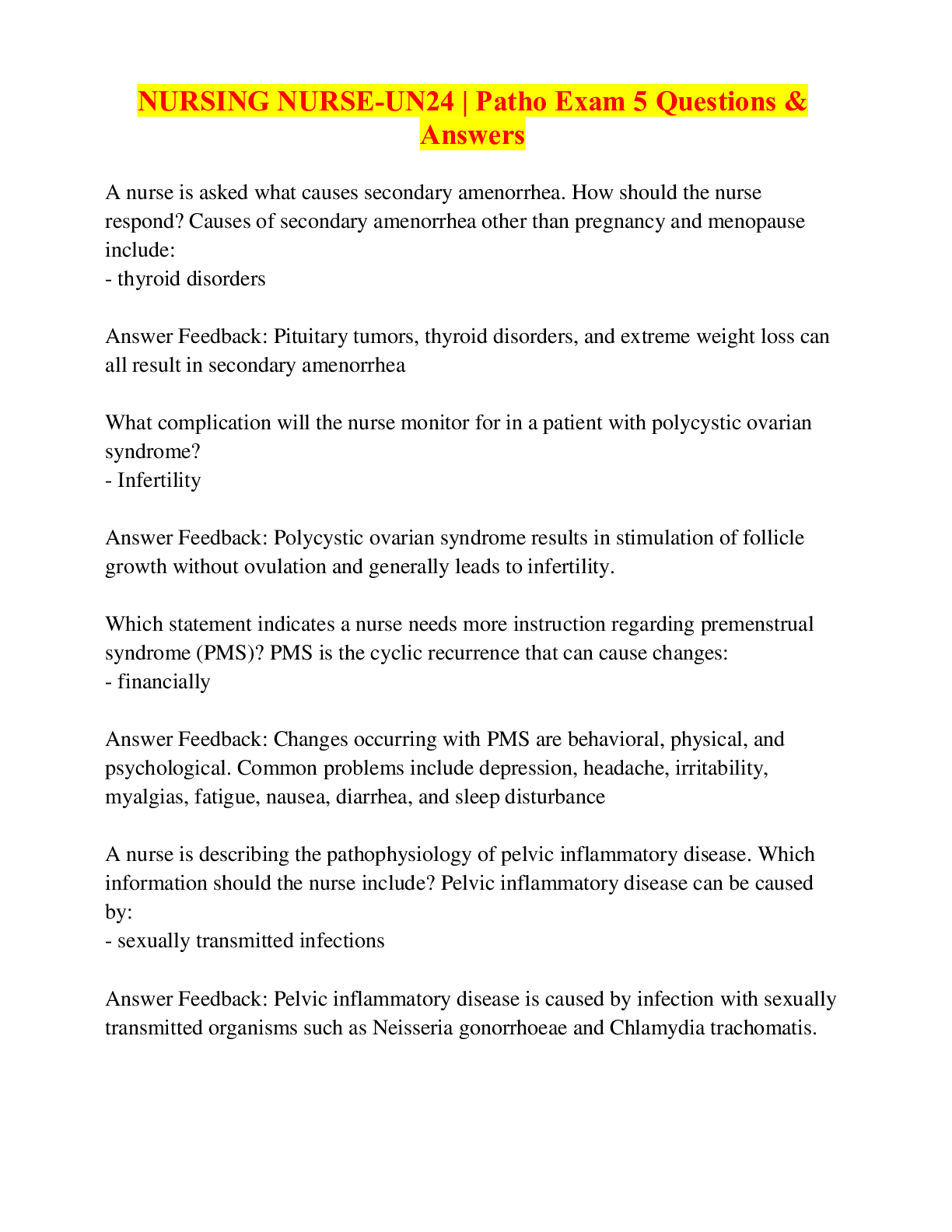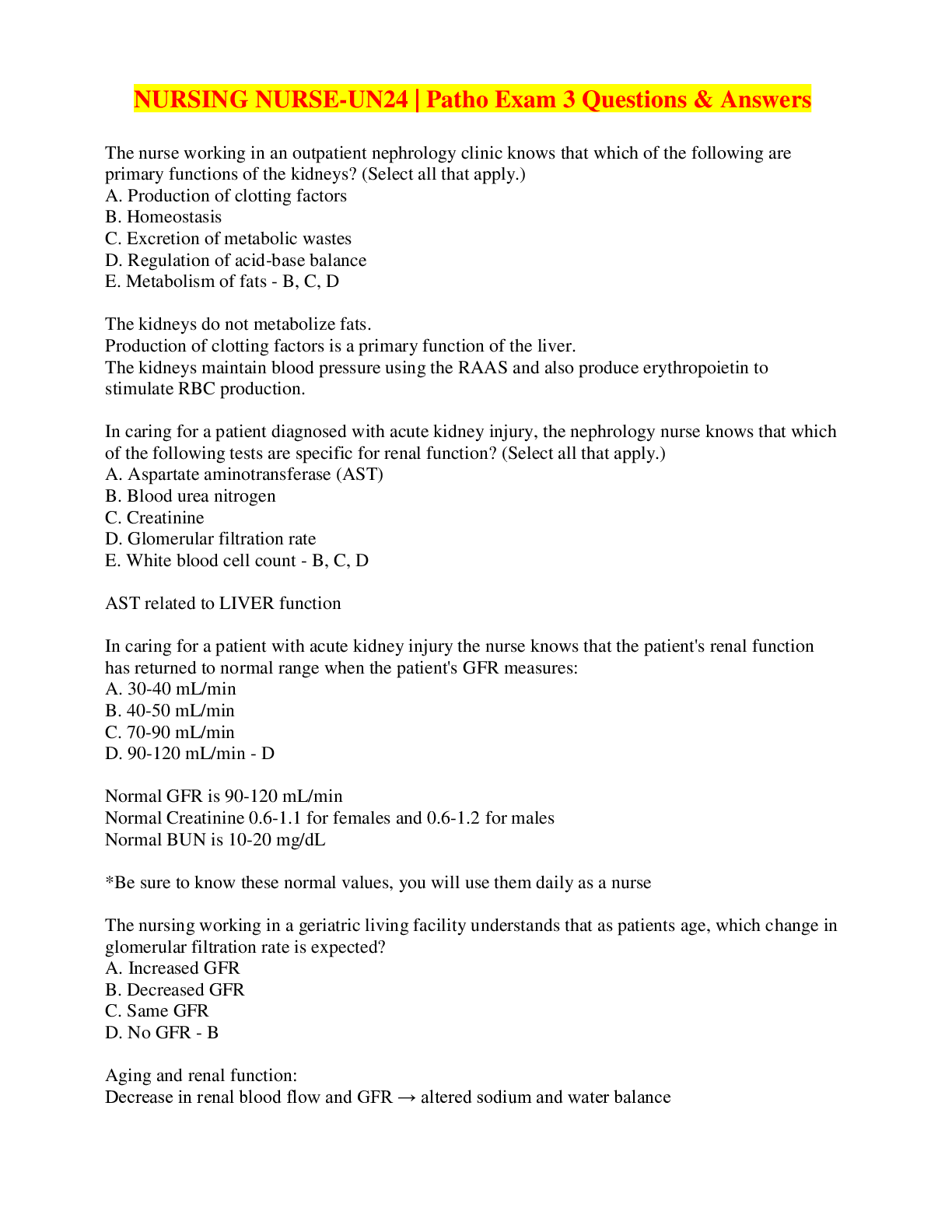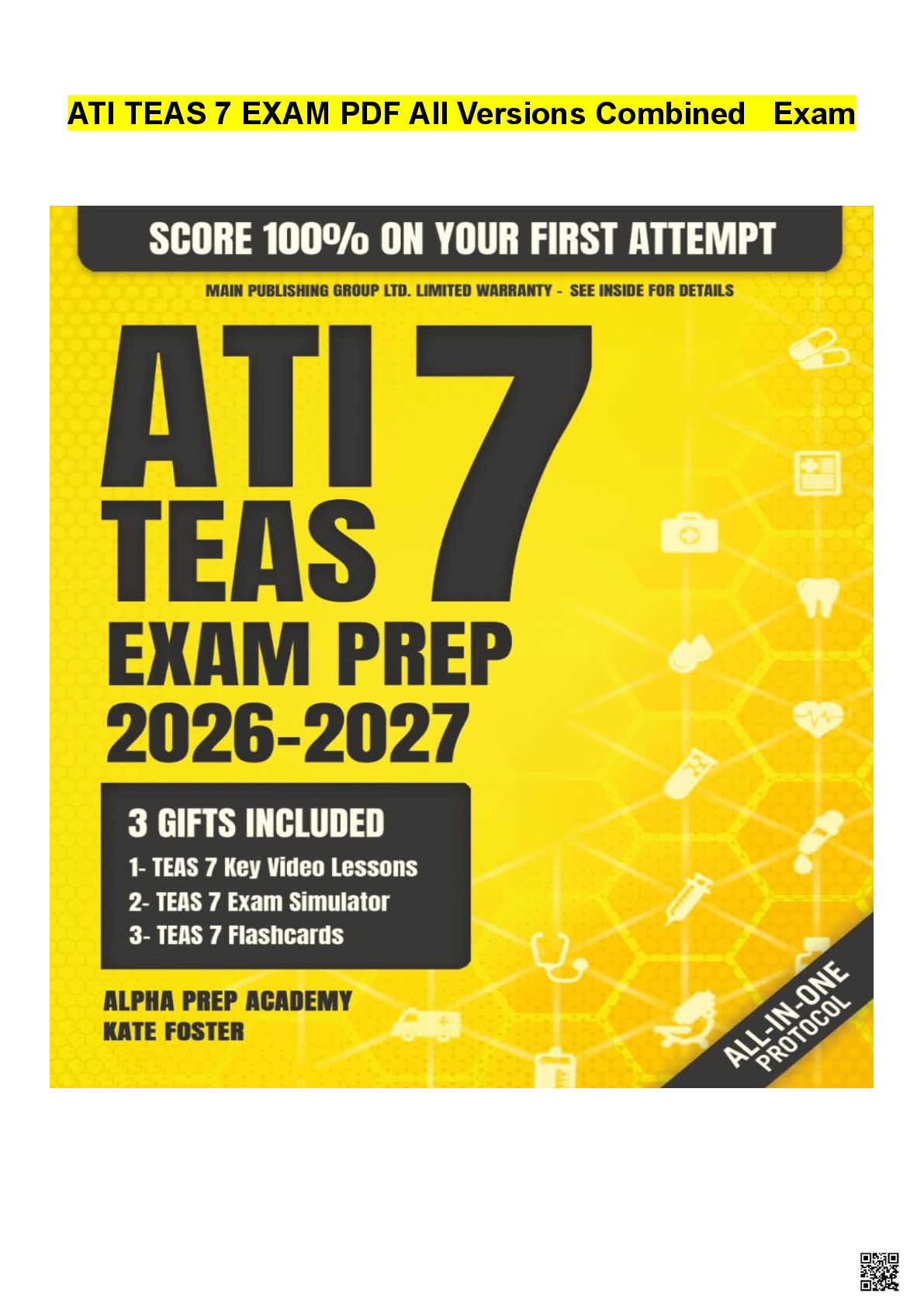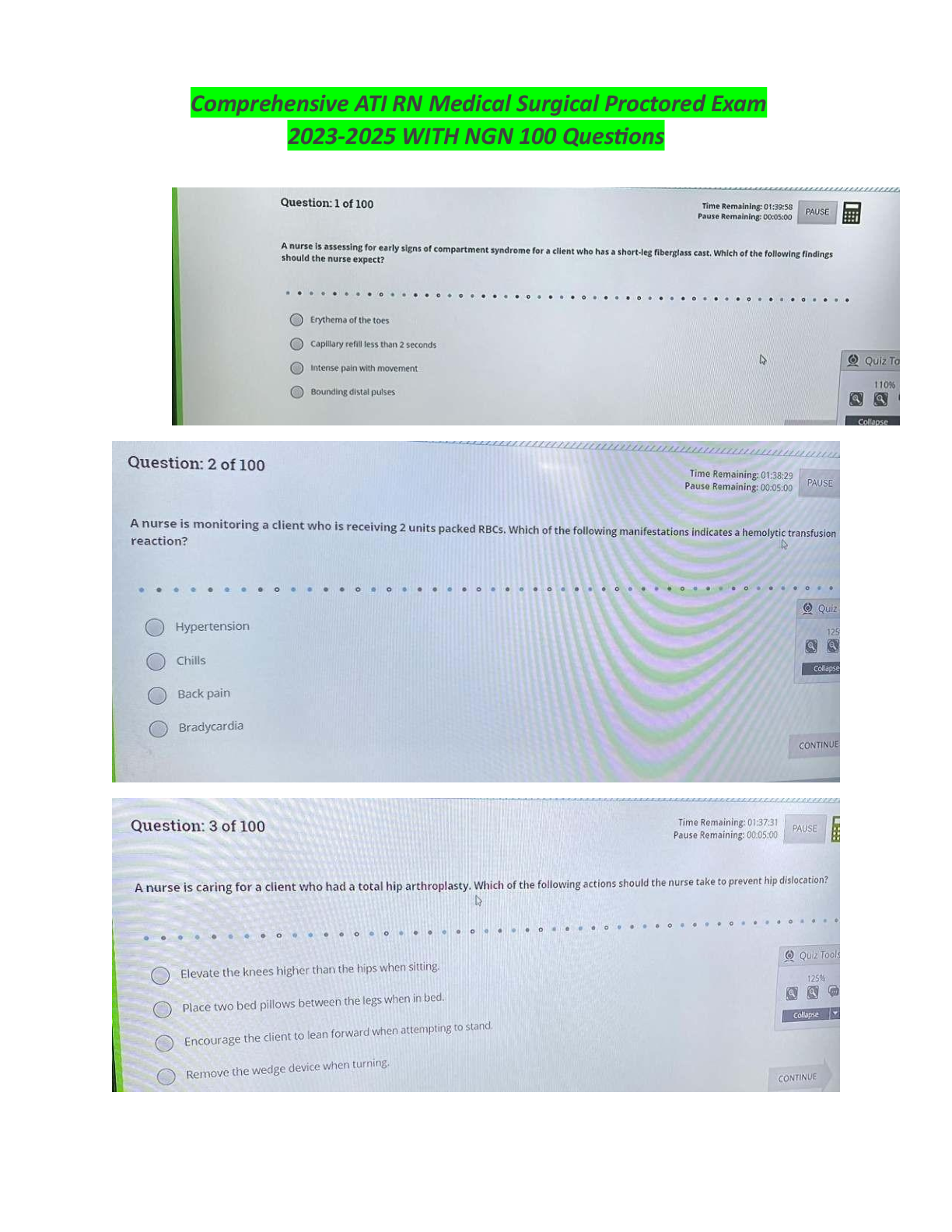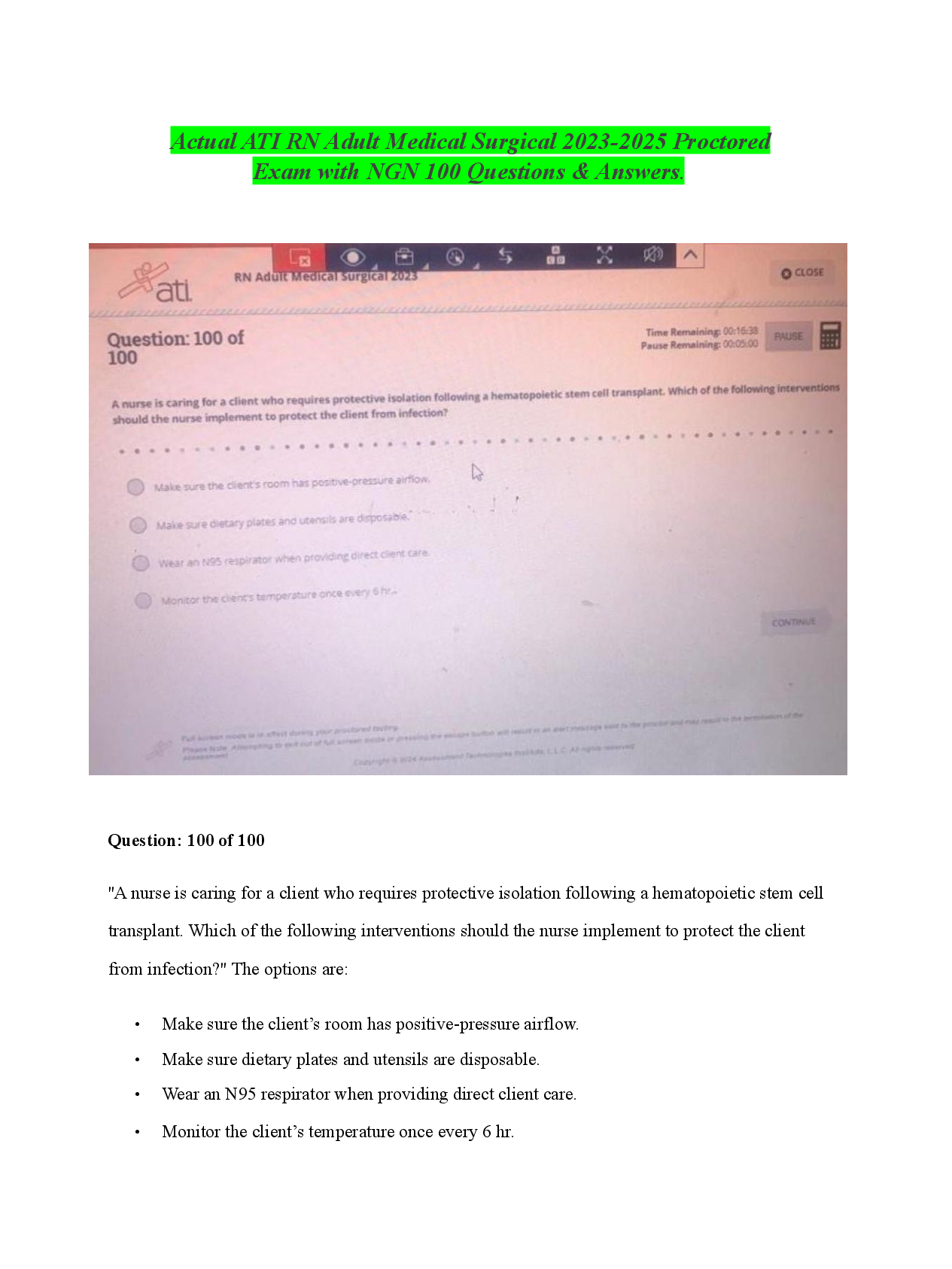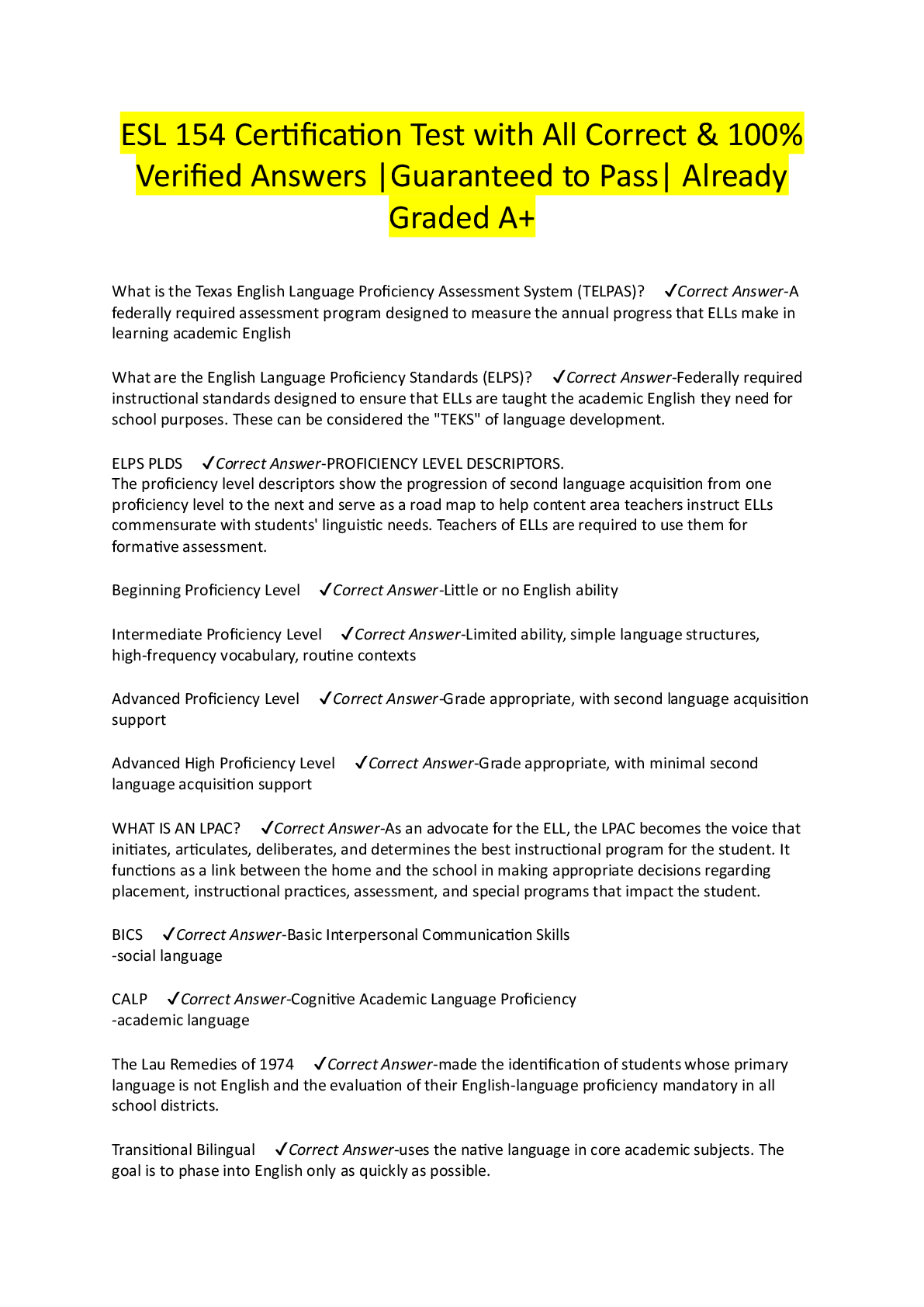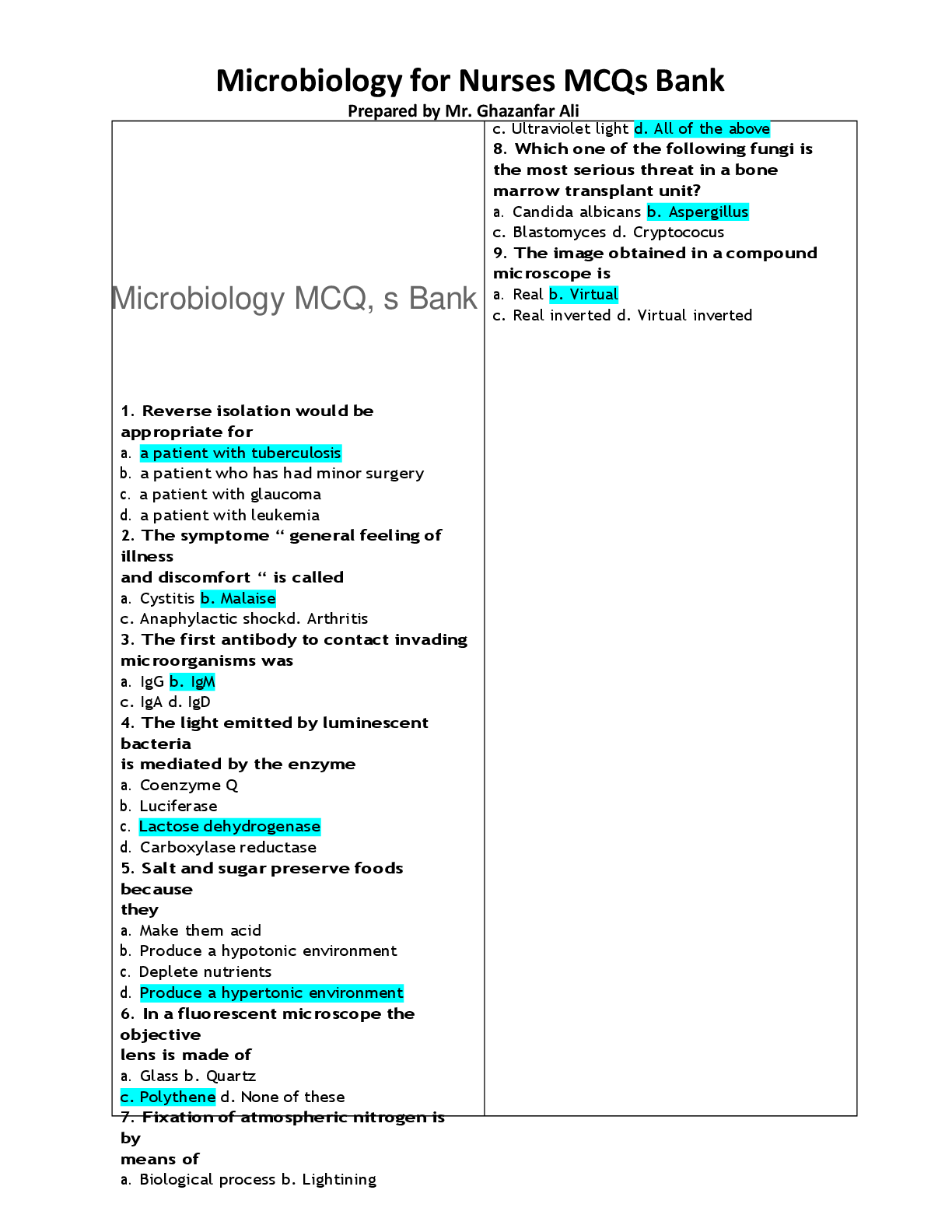PHTLS Pre & Post Test, Q&A, Answered
Document Content and Description Below
PHTLS Pre & Post Test, Q&A, Answered-The displacement of tissue away from the path of a projectile, both temporarily and permanently, is known as:
A. Conization
B. Cavitation
C. Crepitation
...
D. Contusion - B. Cavitation
The single most important factor in determining the potential for injury due to energy exchange is:
A. Mass of the bodies involved
B. Velocity of the bodies involved
C. Density of the tissues involved
D. Surface area of the impact involved - B. Velocity of the bodies involved
In the management of shock, isotonic crystalloid solutions, such as Ringer's, are preferred because:
A. The protein molecules in crystalloid solutions act as volume expanders
B. These fluids draw interstitial fluid into the vascular space to enhance volume
C. These solutions will stay in the vascular space longer than water solutions, such as D5W
D. Their pH enhance oxygen delivery to the tissues - C. These solutions will stay in the vascular space longer than water solutions, such as D5W
With respect to the distance of a fall, which of the following is a guideline for determining a critical fall?
A. 3 times the height of the patient
B. 2 times the height of the patient
C. 5 times the height of the patient
D. 1 ½ times the height of the patient - A. 3 times the height of the patient
The phase of an explosion, or blast, in which hollow organs are squeezed and may rupture is called the __________ phase.
A. Tertiary phase
B. Quaternary phase
C. Secondary phase
D. Primary phase - D. Primary phase
During the primary survey and management of a trauma patient, the E in ABCDE stands for _________?
A. Edema
B. Eyes & ears
C. Expose/Environment
D. Electrical therapy - C. Expose/Environment
The time in which surgical intervention can make a difference in patient outcome is the __________?
A. Golden period
B. Golden time
C. Golden era
D. Golden minutes - A. Golden period (hour)
In the absence of extenuating circumstances, the maximum amount of time it should take to identify and manage immediate threats to life, prepare the patient for transport and begin transport is _________?
A. 5 minutes
B. 10 minutes
C. 15 minutes
D. 30 minutes - B. 10 minutes
In which of the following situations is the use of a short spinal immobilization device indicated?
A. 28 year old male, unrestrained driver in a frontal impact crash. Awake, asks repeatedly what happened, complains of a headache, has a hematoma on his forehead. BP 122/84, HR 92, VR 20.
B. 40 year old female who was pushed down a flight of stairs and is lying prone on the landing between two flights of stairs, complaining of back pain. BP 118/78, HR 100, VR 20.
C. 17 year old female, restrained driver in a frontal impact crash. Awake, pale and diaphoretic, complains of upper right quadrant abdominal pain. BP 100/70, HR 108, VR 20. D. None of the above - D. None of the above
Your patient is a 32 year old man, restrained driver of a vehicle that has been involved in a frontal impact with a concrete bridge abutment. The patient is awake, but has difficulty answering questions due to shortness of breath. His ventilatory rate is 30 per minute. Of the following choices, when is the first time the patient's breath sounds should be checked?
A. As soon as he is removed from the vehicle
B. Prior to being removed from the vehicle
C. As soon as he is immobilized on a long backboard
D. Enroute to the trauma center - B. Prior to being removed from the vehicle
Which of the following represents adequate spontaneous ventilation in an adult?
A. Tidal volume 100 mL, ventilatory rate 40/minute
B. Tidal volume 500 mL, ventilatory rate 8/minute
C. Tidal volume 300 mL, ventilatory rate 16/minute
D. Tidal volume 600 mL, ventilatory rate 12/minute - D. Tidal volume 600 mL, ventilatory rate 12/minute
Which of the following is 100% accurate in verifying endotracheal tube placement?
A. Pulse oximetry
B. End-tidal capnometry
C. Syringe aspiration
D. None of the above - D. None of the above
When utilizing percutaneous transtracheal ventilation, the correct ration of lung inflation to lung inflation time, in seconds, is:
A. 1:4
B. 1:5
C. 1:2
D. 2:2 - A. 1:4
Which of the following is a possible complication of using a manually triggered oxygen powered device for ventilation?
A. Gastric distention
B. Pneumothorax
C. Inability to feel lung compliance
D. All of the above - D. All of the above
[Show More]
Last updated: 3 years ago
Preview 1 out of 16 pages




